CLAS 357
Slave Labor (City v. Country)
January 29, 2024
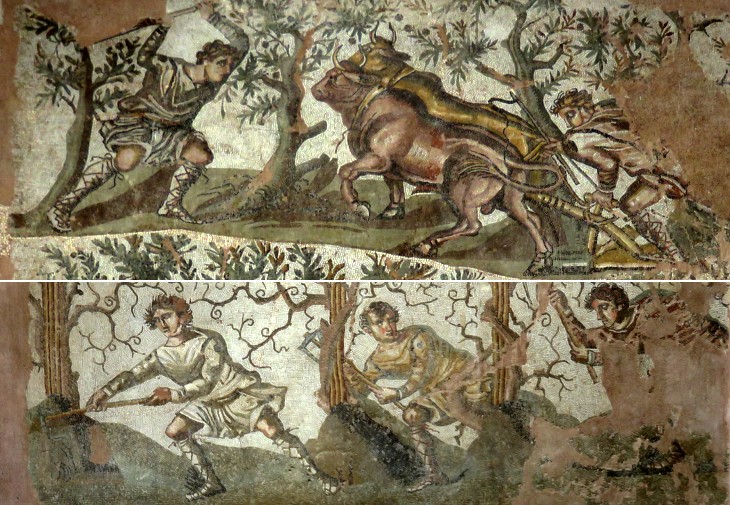
Farming mosaic (Cherchell, Algeria, 3rd century CE)
Response 1 Topics (due 2/7)
The Work of Slaves (city v. country)
Digest of Justinian 32.1.99pr. (essentializing slave-identity in law)
Where urban slaves have been bequeathed, some authorities distinguish them not by their place but by their work, so that even if they are on country estates but do not do country work they are held to be urban slaves.
Columella, On Agriculture 1.8.1-2 (Roman Spain, 1st century CE agricultural writer)
So my my advice at the start is not to appoint an overseer from the sort of slaves who are physically attractive, and certainly not from that class which has busied itself with the voluptuous occupations of the city. The lazy and sleepy-headed class of servants, accustomed to idling, to the Campus, the Circus, and the theatres, to gambling, to cookshops, to bawdy-houses, never ceases to dream of these follies; and when they carry them over into their farming, the master suffers not so much a loss in the slave himself as in his whole estate.
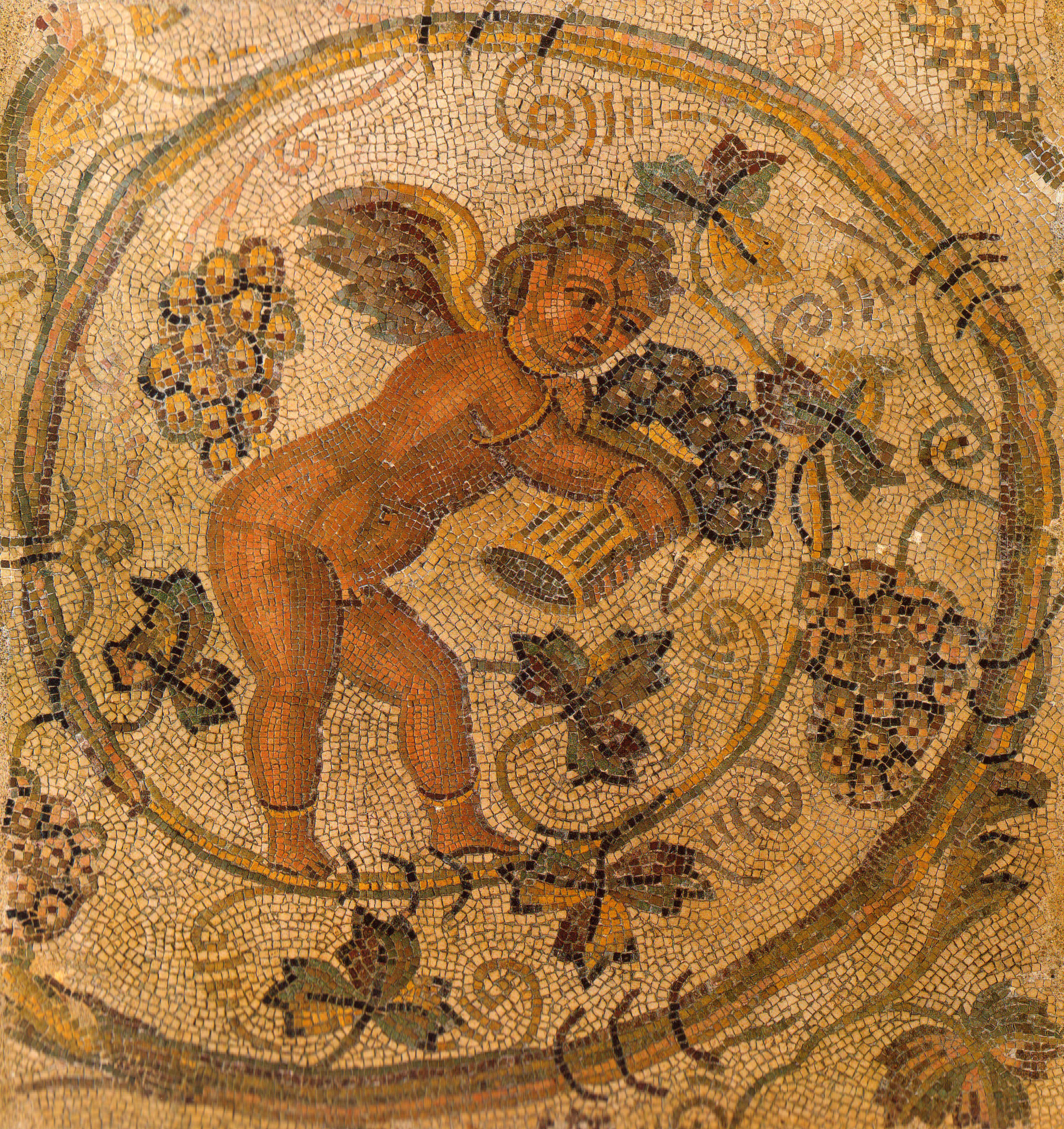
Cupid
harvesting grapes (floor mosaic, Tunisia, 4th century CE)
(1) rural slaves: villa's crops, animal husbandry, olive oil & wine production, domestic duties; little known of experience; distanced from slaveholders (Columella 1.8.15 paternalistically calls for some worker contact/input, e.g. ". . . talk rather familiarly with the country slaves, provided only that they have not conducted themselves unbecomingly, more frequently than I would with the town slaves")
- vilicus: agricultural writers demand modest & moral life, extension of master; subject to orders of dominus/domina; wife (uilica) oversees domestic farm life (food, clothing)
Columella, On Agriculture 1.8.7 (the ideal overseer & control of movements and spaces)
He must have no acquaintance with the city or with the weekly market, except to make purchases and sales in connection with his duties. For, as Cato says, an overseer should not be a gadabout; and he should not go out of bounds except to learn something new about farming, and that only if the place is so near that he can come back. He must allow no foot-paths or new crosscuts to be made in the farm; and he shall entertain no guest except a close friend or kinsman of his master.
- slave resistance (assertions of power, personhood, agency & willfulness): actions to control labor, e.g. faked illness or injury, witholding work, lingering, escape, damaging property (including themselves!); acts of willfulness, e.g. insolence, disobedience, duplicity/doublespeak, stealing, creating own walkways
Columella, On Agriculture 1.7.6-7 (slaves v. tenant farmers)
. . . they let out oxen for hire, and keep them and other animals poorly fed; they do not plough the ground carefully, and they charge up the sowing of far more seed than they have actually sown; what they have committed to the earth they do not so foster that it will make the proper growth; and when they have brought it to the threshing-floor, every day during the threshing they lessen the amount either by trickery or by carelessness. For they themselves steal it and do not guard it against the thieving of others, and even when it is stored away they do not enter it honestly in their accounts. The result is that both manager and hands are offenders, and that the land pretty often gets a bad name.
- male rural slaves' highly specialized work (e.g. "shepherd", "tree pruner", "bird catcher", "oil presser", "pig herder", "animal doctor", etc.), e.g. physique & temperament of Columella's ploughman (1.9.2-3)
- females: some work in fields & with animals; most assigned food-related and woolworking jobs; "production" of children (Columella 1.8.19: 3 sons = work-exemption, 4+ sons = freedom)
- daily labor: holidays (Cato); Saturnalia (7 days festival of Saturn in December; festivity, temporary liberties & social inversions)
- chain-gangs & ergastulum ("prison"); Columella 1.8.16-18, part of master's inspections of villa (". . . inspect the inmates of the workhouse, to find out whether they are carefully chained, whether the places of confinement are quite safe and properly guarded, whether the overseer has put anyone in fetters or removed his shackles without the master's knowledge")
- Columella's farm: control of persons, limited socio-economic mobility & agency
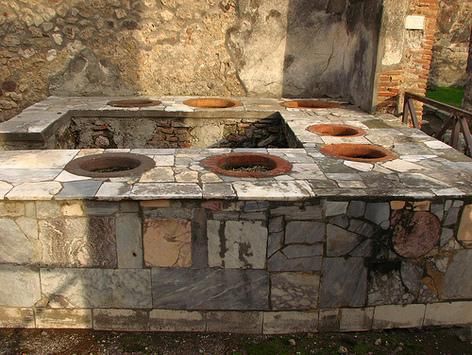
Cafe in Pompeii (1st century CE)
(2) urban slaves: basic household & administrative tasks, epitaphs with job titles > vast specialization in wealthy houses ("litter bearer", "bedroom slave", "cook", "meat carver", "mirror holder", literary secretaries, accountants, etc.) or working outside household (artisans in workshops, service providers, street sales, etc.); children trained (paedagogium) for specialized duties or sale
- visible, public status symbols > slaveholders' power and wealth (numbers, clothes, skills, origins, etc.), e.g. the pretentious doorkeeper/bouncer; paradox of slaveholders' dependence?
Petronius, Satyricon 27 (1st century BCE novel; the wealthy freedman Trimalchio at the baths)
Two eunuchs stood in the circle facing Trimalchio. One was holding a silver chamber-pot; the other was counting the balls, not as they sped from hand to hand as they were thrown in the course of the game, but as they dropped to the ground . . . Trimalchio clicked his fingers, and at this signal the eunuch supplied him with the chamber-pot as he continued playing. The host voided his bladder, demanded water for his hands, and after perfunctorily washing his fingers, wiped them on the slave's hair.
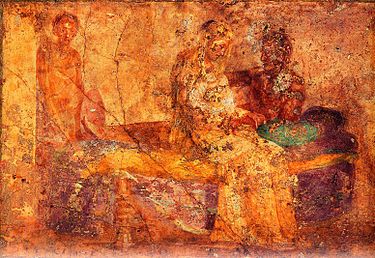
Slave & honeymoon scene (Villa Farnesina, Rome, ca.19 BCE)
- invisibility of slaves in masters' private lives (e.g. masturbating slaves)
- negative consequences of urban slaves' proximity to master?
- increased socio-economic "opportunity" for urban slaves
(a) business agents of aristocrats shunning "vulgar" & "slavish" occupations & commerce; acquisition of property (peculium; ownership of slaves, i.e. a vicarius)
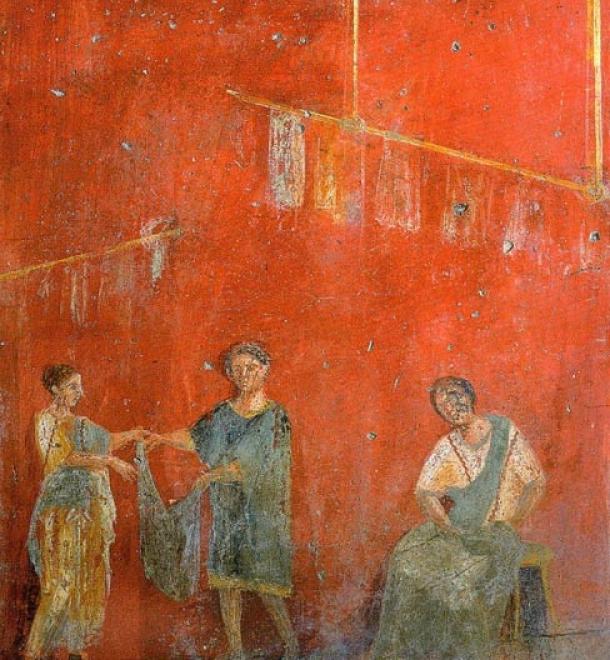
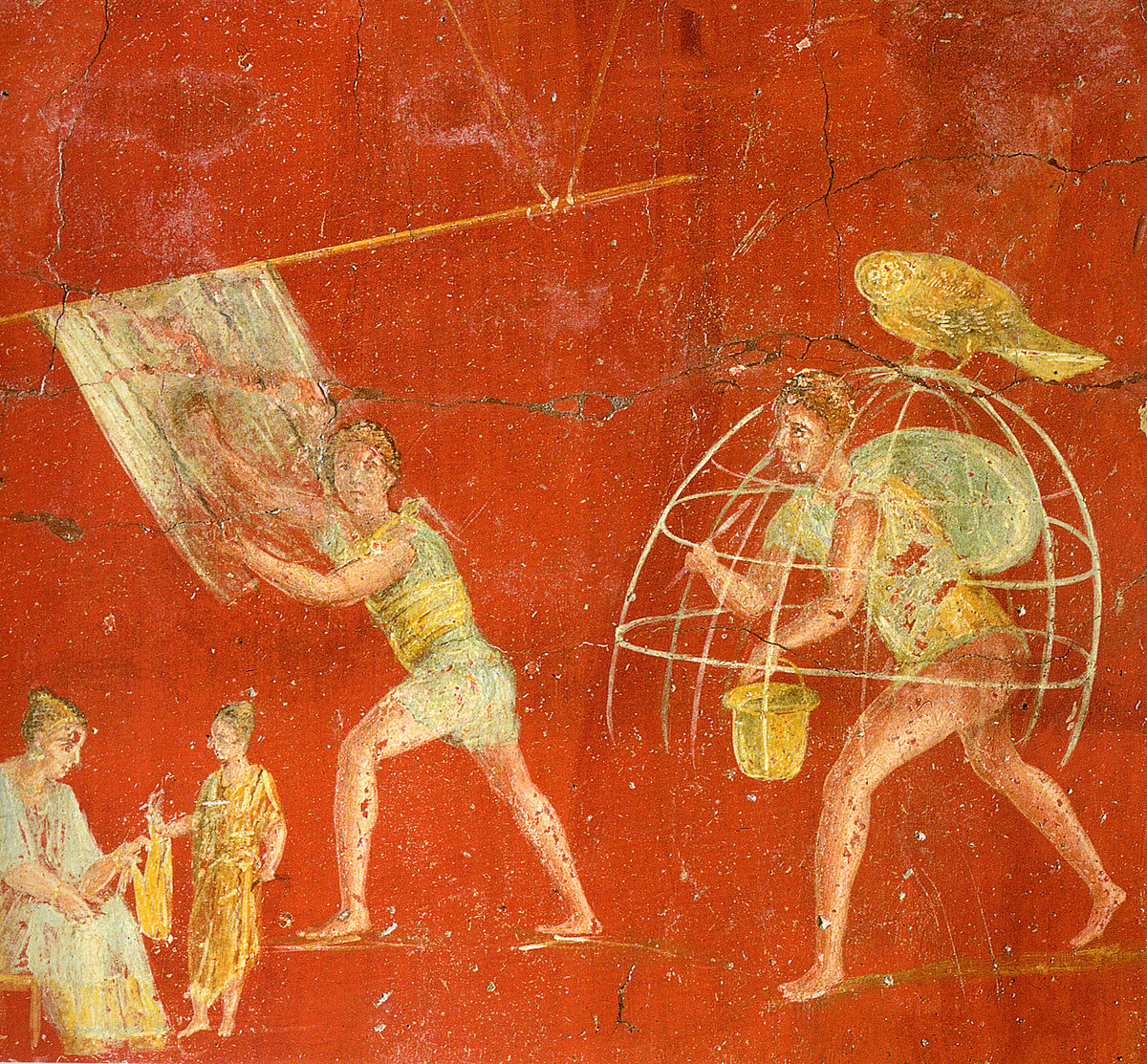
Fuller's shop scenes from Pompeii (shop of Veranius, 1st century CE)
(b) working side-by-side with low status business owners: service & craft industries, e.g. bakeries, fulleries, taverns
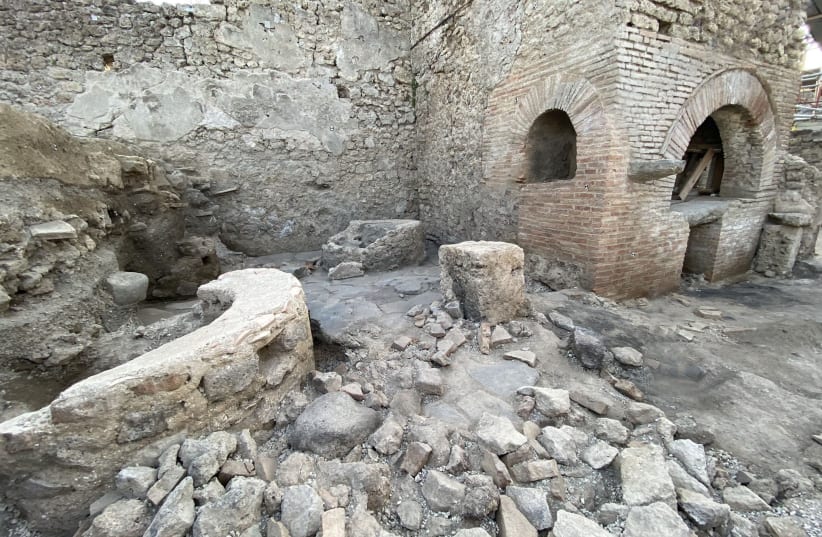
Bakery (Pompei, 1st century CE)
New York Times story on excavation of a "bakery-prison" in Pompeii
- manumission: freedman status, free children (social mobility)
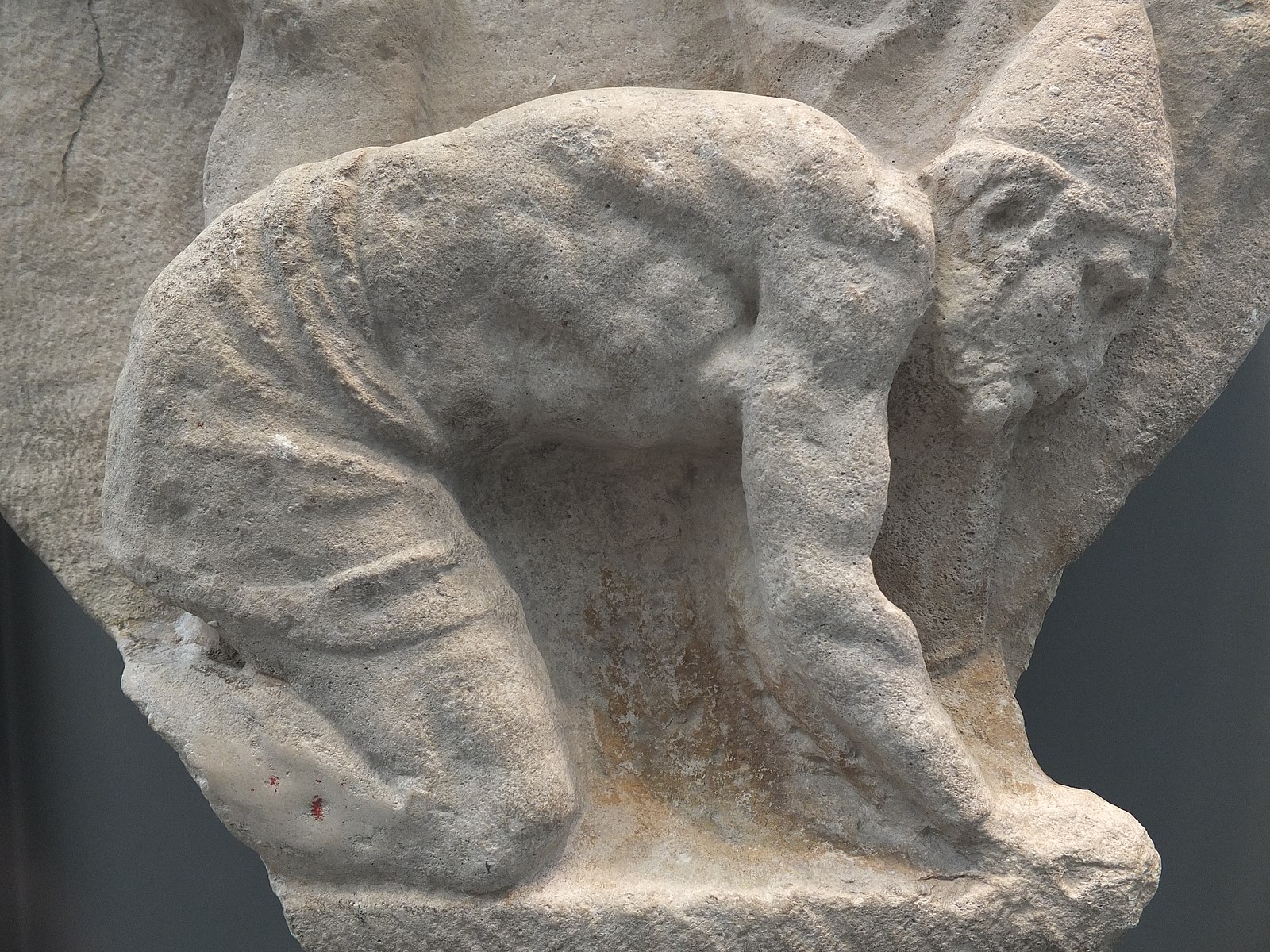
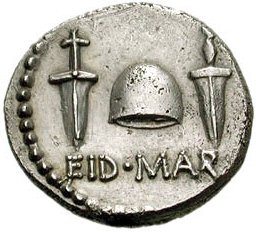
L: relief of manumitted slave with pilleus; R: coin minted by assassins of Julius Caesar
- experience of males vs. females (some gender-specialized household tasks, e.g. spinners, hairdressers, nurses, midwives); mass-scale sexual exploitation
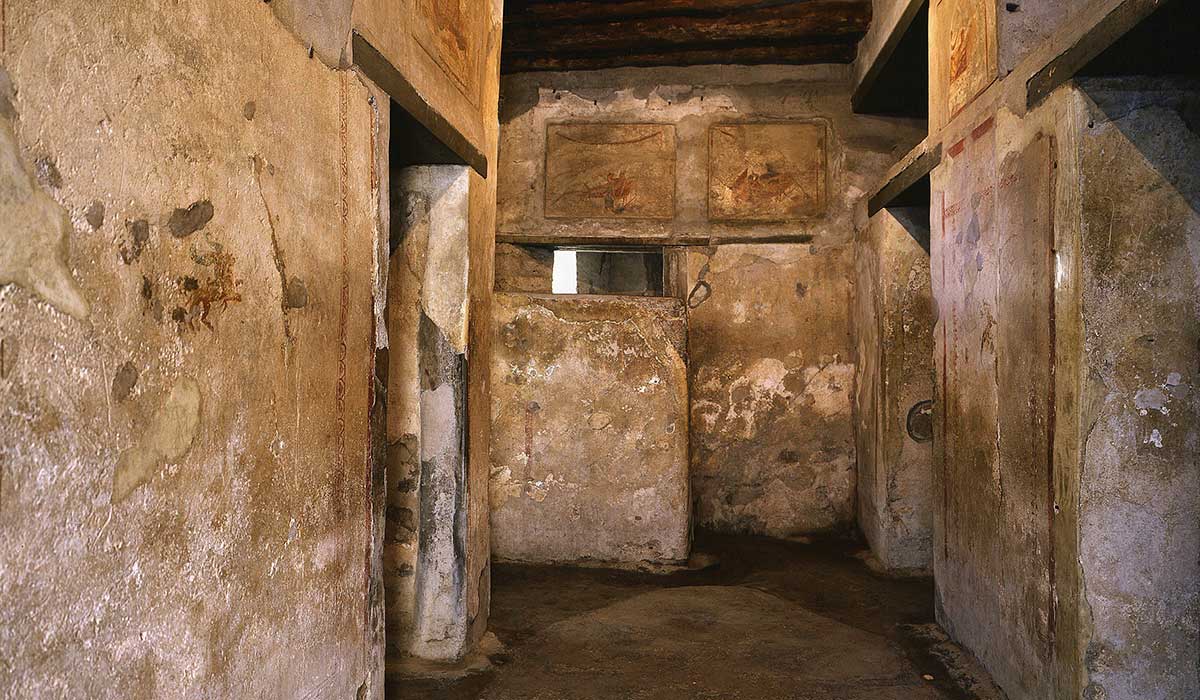
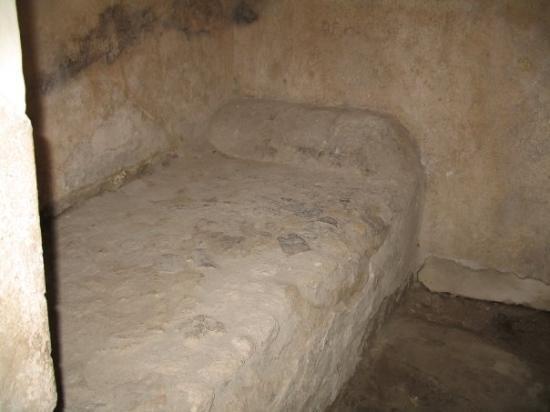
L: Brothel with sex scenes on walls, Pompeii; R: small room in brothel, Pompeii
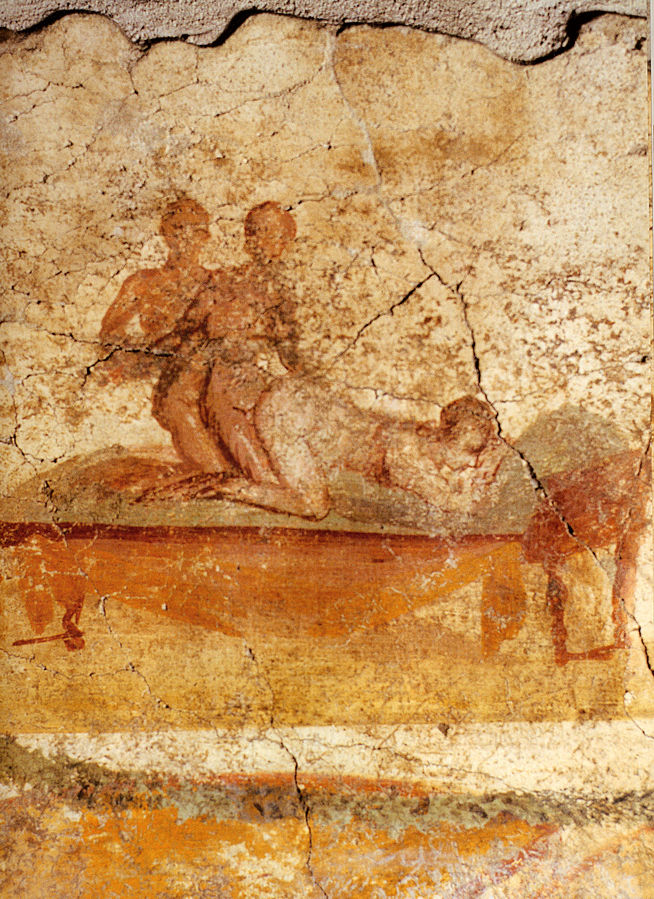
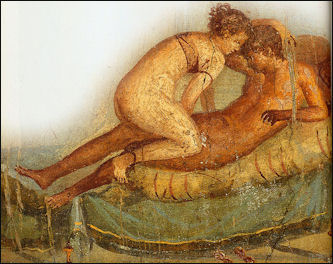
L: bath mural sex scene (Pompeii); R: Sex scene (domestic fresco, Pompeii)












